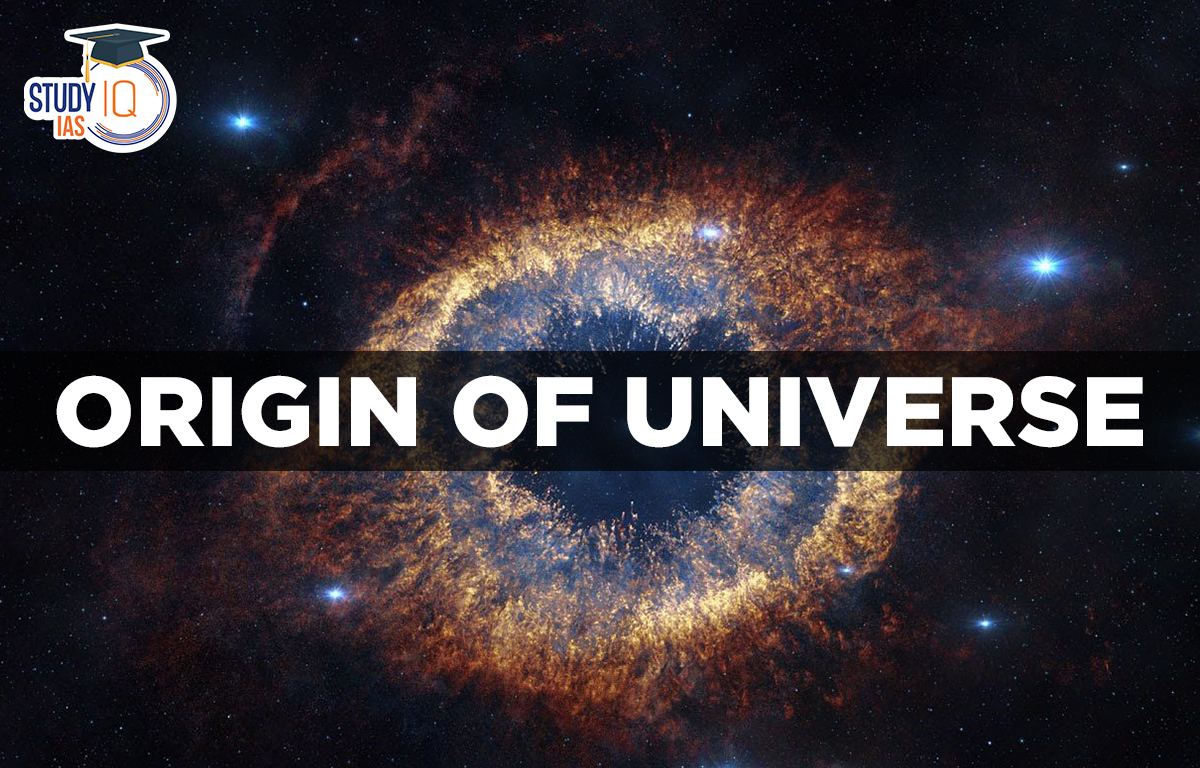Table of Contents
Origin of the Universe
The universe contains all of the matter and energy that exists in our environment. The universe contains millions of galaxies. Each galaxy has millions of stars and there are stars with several planets revolving around it. Our Solar System is also part of the Milky Way galaxy and consists of eight planets and their moons in orbit around the Sun. Our solar system also contains smaller bodies like an asteroid, meteoroids, and comets. In this article we shall try to understand the Evolution and Origin of the universe, our solar system, and the basics of geography.
Origin of the Universe Theories
The study of the Universe started back in ancient times. During the Golden Age of Greek civilization, people held two different views on the Universe- the geocentric view and the holocentric view.
1. Geocentric View
- The geocentric theory states that the Earth is the center of the universe, with everything else orbiting around it.
- This idea was popular in ancient Greece and supported by thinkers like Aristotle and Ptolemy.
- Christianity also taught that Earth was central, making it special for human life.
- Two main reasons for this belief were that the Sun and stars seemed to move around the Earth daily, and people thought the Earth was solid and not moving.
- The geocentric view lasted until the late 16th century, when it was replaced by the heliocentric model from Copernicus, Galileo, and Kepler.
2. Heliocentric View
- Heliocentrism is the idea that the Sun is at the center of the solar system, with the Earth and other planets orbiting around it.
- In the 5th century BC, Greek philosophers like Philolaus and Hicetas suggested that the Earth moved around a central fire.
- Aristarchus of Samos later proposed that the Earth and other planets orbit the Sun.
- Initially, heliocentrism struggled for support because people couldn’t explain why stars stayed in the same positions despite Earth’s movement.
- The geocentric model by Ptolemy dominated for about 1,400 years until Nicolaus Copernicus revived heliocentrism in 1543, which Galileo later supported, leading to his trial in 1633.
3. Modern Astronomy
- Nicolaus Copernicus, Johannes Kepler, Galileo Galilei, and Sir Isaac Newton are known as the founders of modern astronomy.
- Copernicus proposed that the Sun is at the center of the solar system, with planets orbiting around it.
- Kepler discovered that planets move in elliptical (oval) orbits around the Sun.
- Galileo supported Copernicus’s sun-centered model of the solar system.
- Sir Isaac Newton explained why planets move around the Sun and developed the law of universal gravitation, which describes how all particles attract each other based on their mass and distance.
Big Bang Theory
- The origins of the universe remain a mystery and are debated by scientists.
- The big-bang theory suggests the universe began from a hot, dense core.
- This “bang” was a massive explosion that caused matter and space to expand and form atoms.
- About 74% of the universe is made up of hydrogen.
- The universe has been expanding for 13.8 billion years, and recent studies show this expansion is speeding up.
Origin of the Universe UPSC
The Big Bang theory is the dominant cosmological model that explains the existence of the observable universe from its inception to its subsequent large-scale evolution. The model describes how the universe expanded from a high density and temperature starting point and provides a comprehensive explanation for a wide range of observed phenomena.
The Big Bang Theory is a critical concept for the UPSC science and technology section. Both Indian and global scientists are conducting extensive research in this field to determine how the universe began billions of years ago. In this article, you will learn about the various views of the origin of the earth in a nutshell in preparation for the UPSC IAS exam.


 Role of Teachers in Educations, Student ...
Role of Teachers in Educations, Student ...
 India's achievements after 75 years of I...
India's achievements after 75 years of I...
 Bal Gangadhar Tilak Biography, Achieveme...
Bal Gangadhar Tilak Biography, Achieveme...

























